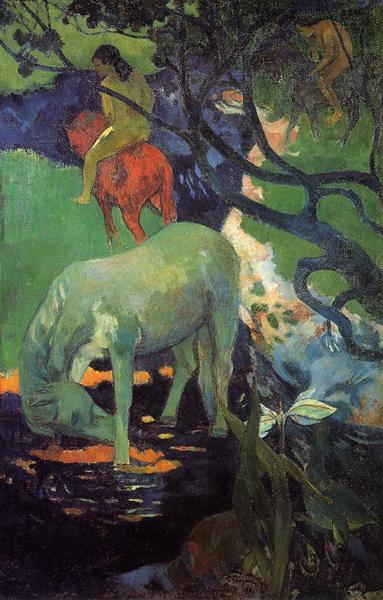
"White Horse" Gauguin
Read more about the painting in the article “7 Post-Impressionist Masterpieces in the Musée d'Orsay”.
site “Diary of painting. In each picture there is a story, fate, a mystery”
» data-medium-file=»https://i1.wp.com/www.arts-dnevnik.ru/wp-content/uploads/2016/10/image-5.jpeg?fit=595%2C931&ssl=1″ data-large-file=”https://i1.wp.com/www.arts-dnevnik.ru/wp-content/uploads/2016/10/image-5.jpeg?fit=719%2C1125&ssl=1″ loading =”lazy” class=”wp-image-4212 size-full” title=”“The White Horse” by Gauguin”Orsay, Paris” src=”https://i1.wp.com/arts-dnevnik.ru/wp- content/uploads/2016/10/image-5.jpeg?resize=719%2C1125&ssl=1″ alt=”“White Horse” by Gauguin” width=”719″ height=”1125″ sizes=”(max-width: 719px ) 100vw, 719px" data-recalc-dims="1″/>
Paul Gauguin (1848-1903) spent the last years of his life on the Polynesian Islands. Half-Peruvian himself, he once decided to run away from civilization. As it seemed to him, in paradise.
Paradise turned into poverty and loneliness. However, it was here that he created his most famous paintings. Including the White Horse.
The horse drinks from the stream. In the background are two naked Tahitians on horseback. No saddles or reins.
Gauguin, just like van Gogh, was not afraid to experiment with color. Stream with orange tints. The horse has a greenish tint from the shadow of the foliage falling on it.
Gauguin also deliberately makes the image flat. No classic volume and illusion of space!
On the contrary, the artist seems to emphasize the flat surface of the canvas. One rider seemed to be hanging on a tree. The second one “jumped” onto the back of another horse.
The effect is created through rough light-shadow modeling: light and shadow on the bodies of the Tahitians are in the form of separate strokes, without soft transitions.
And there is no horizon, which also enhances the impression of a flat drawing.
Such "barbaric" coloring and flatness were not in demand. Gauguin was very poor.

One day one of his creditors, the owner of local pharmacies, wished to support the artist. And he asked me to sell him a painting. But with the condition that it will be a simple plot.
Gauguin brought the White Horse. He considered it simple and understandable. Although, by the way, a lonely animal among the Tahitians means the soul. And the color white was associated with death. But it is possible that the customer of the painting did not know this local symbolism.
He did not accept the picture for another reason.
The horse was too green! He would have preferred to see a white horse to match the title.
If only that pharmacist knew that now for this Green, or rather White horse, they would give several hundred million dollars!
***
Leave a Reply